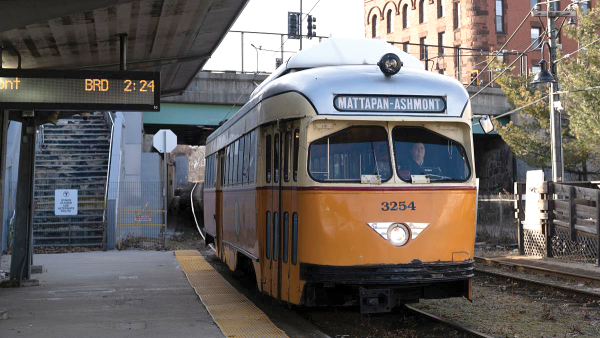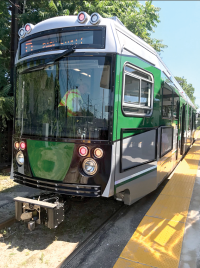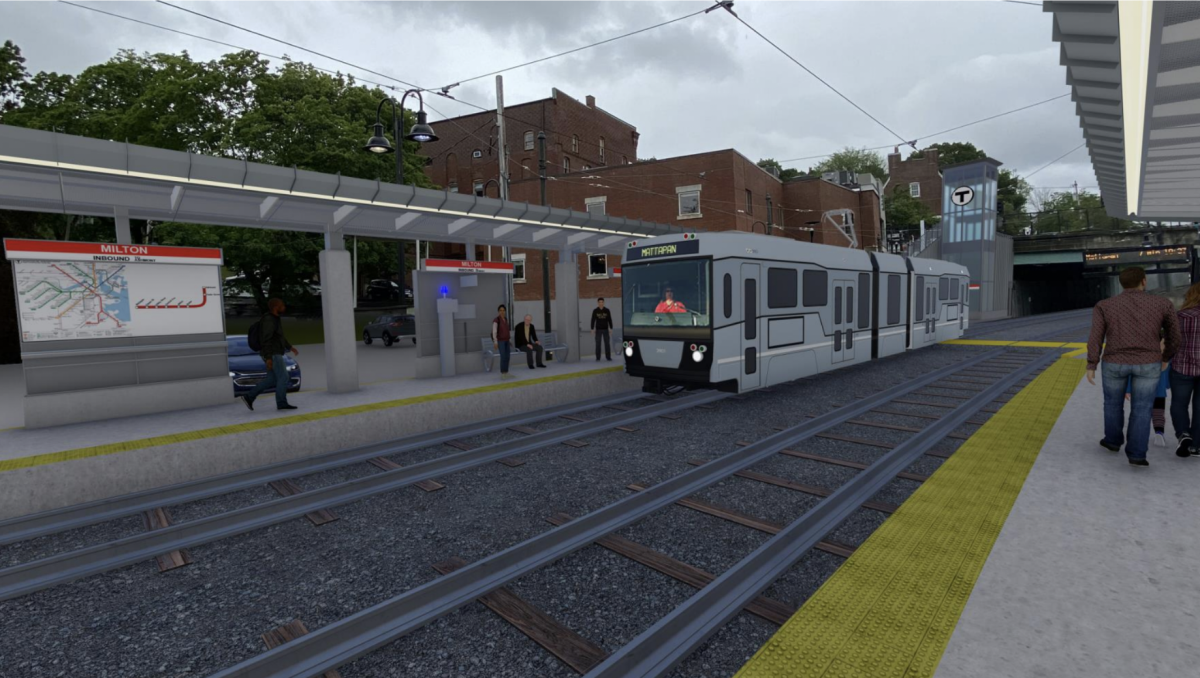March 20, 2024

A 1940's-era Presidential Conference Committee car at Milton station in Lower Mills. Reporter file photo

It’s moving at a slower pace than some would like, but preparations for retrofitting the MBTA’s “Hi-Speed” trolley line that links Mattapan and Ashmont via Milton continue to advance this month with engineers seeking permits to drill dozens of “exploratory borings” along the 2.6-mile-long right of way in Boston and Milton this year.
T officials say the work is directly linked to its plan to eventually replace the existing fleet of 1940s-era Presidential Conference Committee (PCC) cars with newer “Type 9” light rail vehicles currently in service on the Green Line. The heavier Green Line-style vehicles, which will double the passenger capacity on the Red Line extension, require reinforced infrastructure along the trolley’s right of way.
In a letter sent to the Boston Conservation Commission on Feb. 20 in reference to 2 of the 42 borings planned by its contractors, the MBTA’s director of Environmental Review and Permitting, Tess Paganelli, requested a hearing at the commission’s next available meeting to explain why it needs to do the tests.
“The exploratory borings are needed to develop geotechnical design recommendations for potential new or modified substructures for bridges, station improvements, retaining walls, and overhead catenary system pole foundations,” wrote Paganelli.
Elsewhere in the filing, the T official wrote: “This information will be critical in developing design and construction options and for cost estimating purposes.”
The MBTA has thus far committed $127 million to “transform” the rapid transit line, which is currently at 15 percent design status. T officials tell the Reporter that the boring work planned for this year will help finalize the design of “stations and structures needed to support the larger, higher capacity light rail vehicles.”
In a statement to the Reporter, MBTA general manager Phil Eng said the T “is committed to ensuring a safe and reliable mass transportation network, including the Mattapan Line. Over the last year, we have made great strides to begin reversing years of deferred maintenance and repairs. While much of the early work has been repairing and replacing tracks, we have maximized production by including targeted station and power improvements at the same time.”
Eng continued: “Last fall, we prioritized the Mattapan Line, eliminating all 22 speed restrictions in this corridor, allowing trains to run at full speed again, and shortening travel time while giving riders a more comfortable trip. We know we have a long way to go, but repairing the track is a key building block to all the other needs along the corridor. We continue rebuilding trolley cars as we evaluate how to best deliver projects with available funds that can provide meaningful results sooner rather than later.”
T officials say that work to overhaul the 80-year-old PCC cars is continuing this season, with a third refurbished car expected to join two others already in service by “late spring.” Two additional cars are now in “varying stages of overhaul work.”
For all that, state officials have already decided that the vintage, orange-colored PCC vehicles will be phased out in the coming years. The Type 9 LVR cars that will replace them will dramatically increase the passenger load capacity. The current 1940s era trolleys can seat 40 people but can fit up to 130 passengers on a tightly packed trip. The Type 9 cars only have four additional seats but have much more standing room and can carry a maximum of 212 people per car, according to the MBTA.
The newer vehicles have other advantages. They are more dependable in winter months and won’t be as noisy as they rattle through the neighborhoods, T officials have said.
The MBTA first announced plans to swap out the PCC cars with Type 9 LVRS in 2019. At the time, the T said it planned to continue running the vintage cars for another 8-10 years before transitioning to the larger vehicles. In the interim, the agency budgeted about $8 million to repair the PCC cars to keep them running until the line was equipped to carry the newer, heavier fleet.
At public meetings held in 2022 and 2023, MBTA officials re-affirmed their intent to follow through on that plan and offered updates on evolving engineering plans and cost estimates for retrofitting the nine station stops along the line.

A rendering of the Milton stop on the Mattapan line. Image via MBTA


